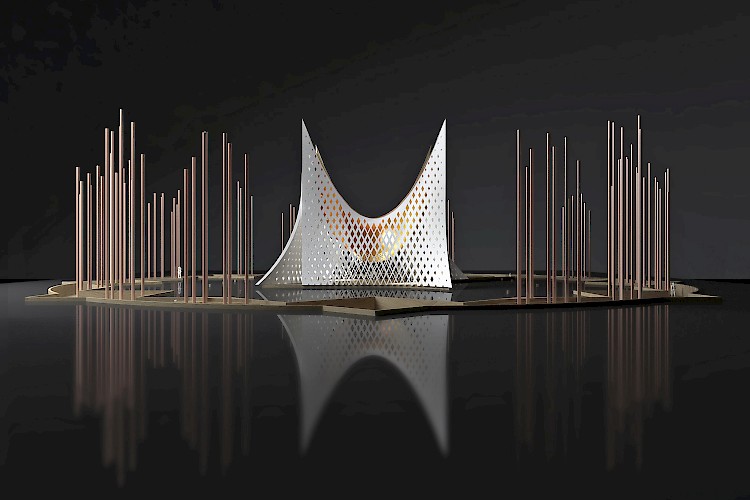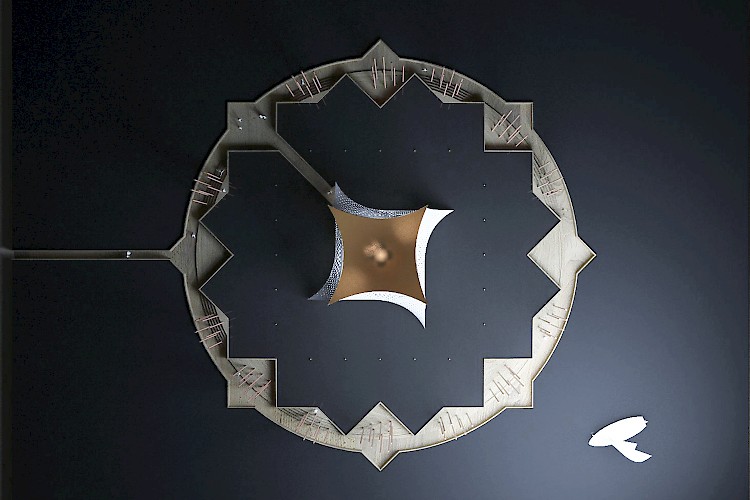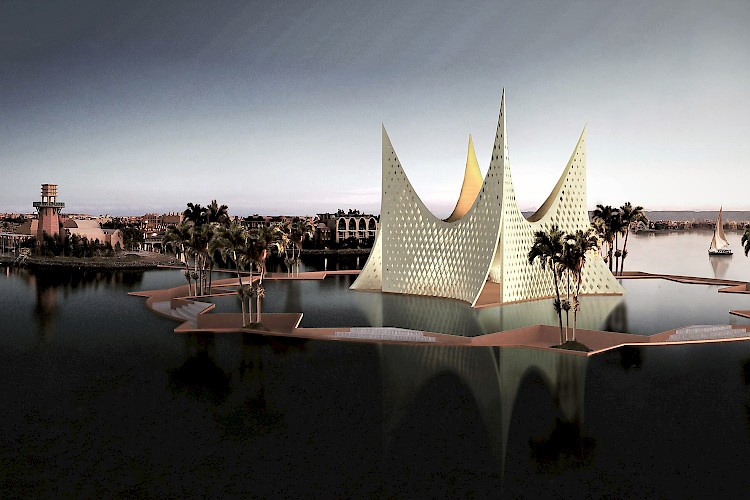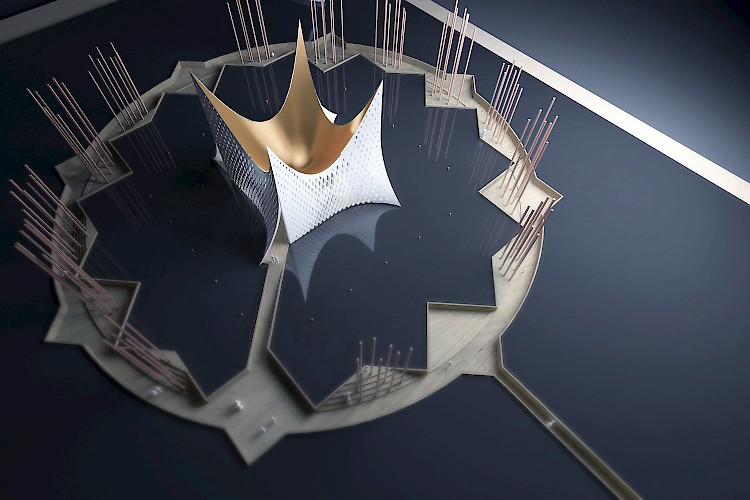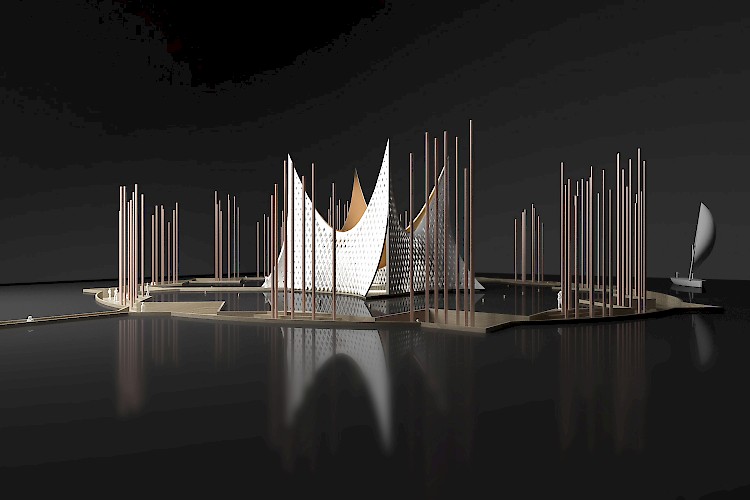The Veil
The surrounding landscape is important to the spiritual experience of a building, as much as the building itself. It was integral to the vision of the project to choose a beautiful location and to give the pavilion enough ‘breathing space’. An organic form akin to nature. An organic interior that nurtures, like a mother’s womb, or an oyster cultivating a pearl. An ‘offering’ from the sea, the Pearl of the Red Sea. A celebration of life, the self, spirituality and coming together.
The pavilion is placed where it is a welcoming symbol for arrivals from the sea, giving it symbolic purpose. This dramatic setting inspired the floating oasis park surrounding the pavilion structure, which would also provide a space of peacefulness and reflection. It exceeds its function and becomes an emblem for the town and region, which is reinforced by its location at the entrance to and from the Red Sea. A park and pavilion that belongs to town and the people.
As with much of the regions architecture, the pavilion references Nubian and Egyptian vernacular architecture, in particular the way the Nubian arch is expressed in the inverted dome of the building as well as the the façade which takes its inspiration from the mashrabiya ‘veil’, shading the interior. This informed the buildings' distinct architectural language The overall form of the pavilion also reminds one of Feluca boats and Bedouin tents, drawing on the rich cultural heritage of the area.
The inverted dome is designed to appear to hold an invisible force in suspension and in its entirety to seemingly float unsupported. The façade is designed as a veil that is dropped gently over the peaks of the inverted dome, with a slight undulation. The veil parts on the corners of the building to create the main entrance on one corner; while in the other partings provide views out towards the sea. From the outside, the veil openings offer glimpses of the inverted dome within. The bottom of the dome is intricately carved with patterns, creating a focal point in the centre of the space. The closeness of the dome and its details gives a more intimate experience, while the corners of the building, which soar dramatically upwards, creating a sense of awe.
The general shape of the pavilion as well as the way the façade is perforated, promotes the natural ventilation of the building, drawing cool air from the water’s surface and allowing warm air to escape from the building through the 4 turrets. The perforations also allow direct sun to dapple the interior with light. The patterned perforated façade also hints to the way the building works structurally, where the denser parts of the façade accommodates the more direct structural forces .
The Oasis Ring
The ring provides intimacy and serenity, allowing the building to be experienced from different angles. Intended to be planted with various species of palm (Aceraceae), the ring will be partially submerged to provide stunning underwater views. The circular route around the pavilion will provide a public space for rest and reflection. Filled with benches and patches of shade and greenery, it offers a space from which the cool breeze and views of the pavilion can be enjoyed.
Info
Date| Client| Design Architect| Location| Construction Cost| Gross Floor Area| Executive Architect| Structural Engineers| Facade Engineers| Services Engineer| | 2020 - Confidential Steyn Studio Red Sea Confidential xsqm TBC TBC TBC TBC |
